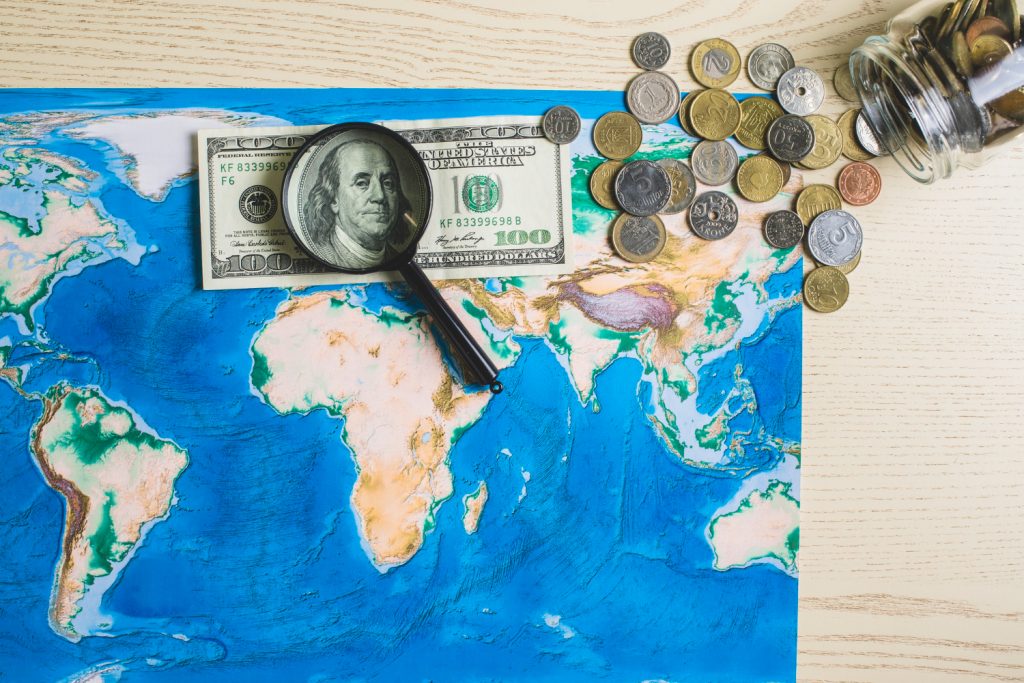Based on their GDP, the United States, China, Germany, Japan, and India are among the world’s leading economies. Gross domestic product (GDP) is a measure of the total value of all the finished goods and services made in a country during a specific period, usually a year. A country’s GDP is often used to gauge its economic size and its impact on the global economy.
Typically, the expenditure method is used to calculate GDP. This method adds up the value of net exports, spending on new consumer goods, spending on new investments, and government spending.
In most of the world, countries’ GDPs change with the stages of different economic cycles. This is happening against a background of long-term economic growth. However, even with these ups and downs, the economies ranked highest by GDP don’t easily relinquish their position in the first place.
Over the last twenty years or so, there have been significant changes to the list. In 2000, China ranked 13th. Since 2010, it has been in second place. Indonesia moved from the 27th largest economy in 2000 to the 16th largest economy in 2025, which remains a notable achievement.
In 2021, countries began to recover from the economic impact of the COVID-19 pandemic, which led to significant declines in GDP in 2020. The pandemic had a substantial impact on businesses worldwide. As a whole, countries have continued to grow, and by 2025, the world’s GDP had reached $115.49 trillion.

Getting the GDP
People often use the following methods to figure out GDP:
• Nominal GDP in current US dollars: This is the simplest and most common way to compare and measure GDP between countries. It uses local prices and currencies, which are converted into US dollars using market exchange rates. This is the number that was used to rank the countries on the list of the top 25.
• Purchasing power parity (PPP) adjusted GDP in current international dollars: This is a different way to compare nominal GDP between countries because it changes currencies based on what things people could buy in those countries instead of the exchange rate. This takes into account the fact that the cost of living in different countries varies.
• GDP growth: This is the nominal GDP growth rate expressed in local prices and currencies over one year. It indicates the rate of economic growth in that country.
• GDP per person in US dollars right now: This is a country’s nominal GDP split by its population. GDP per capita indicates the average amount of money each person in a country earns, not the total amount of money the country generates. This can also be used as a rough estimate to determine how much money people in a country earn or how well they live.
1. The United States
• The nominal GDP in today’s US dollars is $30.34 trillion
In current international dollars, the PPP-adjusted GDP is $30.34 trillion.
• GDP Growth: 2.2%5
• The nominal GDP per person in today’s dollars is $89,68,000.
Based on total GDP, the US economy is the biggest in the world. The finance, real estate, insurance, professional and business services, healthcare, and other service-based industries comprise the most significant portion of the GDP.
The US economy is open, which makes it easy for businesses and foreign investors to invest in the country. It is the most powerful country in the world’s politics and can sustain a substantial foreign national debt because it issues the world’s primary reserve currency.
In many areas, the US economy is at the cutting edge of technology. However, it is facing increasing threats, such as growing economic inequality, higher costs for healthcare and the social safety net, and deteriorating infrastructure.
The nominal GDP for China is $19.53 trillion in current US dollars.
• According to PPP, the country’s GDP in current international dollars is $39.44 trillion
• GDP growth: 4.5%5 • Nominal GDP per person in current US dollars: $13,87,000
2. China
China has the world’s second-largest nominal GDP in current dollars and the world’s most significant PPP GDP. Its economy has grown at a speedy rate over the last twenty years, which has led some experts to think that China may one day pass the US as the world’s largest economy.
Since the 1970s, China has slowly opened up its economy. As a result, the economy has grown, and people’s living standards have improved significantly. As the government has gradually ended collectivization in farmland and industry, given market prices more freedom, and granted businesses more independence, trade and investment between countries have increased significantly.
This, along with an industrial strategy that supports manufacturing in China, has enabled it to become the world’s largest exporter. Even with these benefits, China faces significant challenges, including an ageing population and extensive environmental damage, which has slowed its growth.
3. Germany
Nominal GDP is 4.92 trillion euros ($4.92 trillion)
• GDP adjusted for price changes in current international dollars: $6.17 trillion
• GDP growth: 0.8%5
• The nominal GDP per person in today’s dollars is $57,91,000.6
It is the third-largest economy in the world. It also has the biggest economy in Europe.
Germany has a very skilled workforce and is a major exporter of cars, machines, chemicals, and other manufactured goods. Germany, on the other hand, faces some challenges with its population that hinder its economic growth. Its low birth rate makes it harder to replace its ageing workforce, and its high net immigration rate puts a strain on its social aid system.
4. Japan
Nominal GDP is $4.39 trillion per year
• Adjusted GDP based on purchasing power parity (PPP): $6.77 trillion
GDP growth: 1.1%5; nominal GDP per person in current US dollars: $35,61,000
There are four big economies in the world. Japan’s manufacturing and export-based economy is built on strong cooperation between the government and business, as well as modern technological know-how. Many large Japanese enterprises are organized as keiretsu, which are networks of companies that collaborate closely.
Following the Lost Decade of the 1990s and the impact of the global Great Recession, Japan’s economy has experienced faster growth in recent years, mainly due to the policies of former Prime Minister Shinzo Abe. However, Japan lacks many natural resources and must import energy, especially since its nuclear power industry shut down following the 2011 Fukushima disaster. Japan has also faced challenges with an ageing population.
The nominal GDP for India is $4.27 trillion in current US dollars.3 The GDP, adjusted for purchasing power parity (PPP), in current international dollars is $17.36 trillion, and GDP growth is 6.5%5. The nominal GDP per person in current US dollars is $2,94,000.
5. India
India has the lowest GDP per person on this list because it has the most people.
In India, the economy is a mix of traditional village farming, handicrafts, modern, fast-growing industries, and automated farming. It exports a significant amount of business outsourcing and technology services, and the service industry accounts for a substantial portion of its economy.
Since the 1990s, India’s economy has experienced significant growth, mainly due to the liberalization of its markets. However, rigid rules for businesses, widespread corruption, and chronic poverty make it hard to keep growing.
6. The United Kingdom
• The nominal GDP is $3.73 trillion in today’s money.3. GDP adjusted for purchasing power parity (PPP) in current international dollars: $4.42 trillion nominal GDP per person in current US dollars is $54,28,000, and GDP growth is 1.5%5.6
There are six major economies in the world, and the UK is the sixth-largest. The UK has a wide range of service industries, particularly those related to banking, insurance, and business.
The UK’s close trade ties with continental Europe have become significantly more complex due to the ongoing Brexit negotiations following the 2016 referendum to leave the European Union (EU). On January 31, 2020, the UK ceased to be part of the EU.
The nominal GDP for France is $3.28 trillion in current US dollars.
• Adjusted GDP based on purchasing power parity (PPP): $4.49 trillion
• GDP Growth: 1.1%5
• The nominal GDP per person in today’s dollars is $49.53 thousand
7. France.
France gets more tourists than any other country every year, which is a big business.
France has a mixed economy characterized by a diverse range of private and semi-private enterprises across various sectors. However, the government remains heavily involved in certain key areas, such as security and electricity production.
Because the French government aims to promote social equality through economic intervention, the economy faces several challenges, including a rigid job market with high unemployment and a relatively high public debt compared to other modern economies.
The nominal GDP for Italy is $2.46 trillion in current US dollars.
• GDP adjusted for price changes in current international dollars: $3.69 trillion
GDP growth: 0.8%5; nominal GDP per person in current US dollars: $41,71,000
8. Italy
Italy is the third-largest economy in the eurozone.
The economy and level of development in Italy vary significantly from one region to the next. The North has a more developed and industrialized economy, while the South is less developed. Due to its high public debt, inefficient court system, weak banking sector, stagnant job market with persistently high youth unemployment, and substantial black market, Italy’s economy has been growing slowly for some time.
9. Canada
Canada’s nominal GDP is $2.33 trillion in today’s dollars. 3. GDP adjusted for purchasing power parity (PPP) in current international dollars: $2.69 trillion. 4. GDP growth: 2.4%5
• The nominal GDP per person in today’s dollars is $55,89,0006
Canada has the ninth-largest economy in the world. Canada has the third-largest known oil reserves in the world, and its energy extraction industry is very well developed. Canada also has strong service and industry sectors, most of which are based in cities close to the US border.
There is free trade between Canada and the United States, so approximately 77% of Canada’s goods are exported to the US market each year. Due to its close ties to the US, Canada’s economy has grown at a rate comparable to that of the world’s largest economies.32
The nominal GDP for Brazil is $2.31 trillion in current US dollars.3 The GDP, adjusted for purchasing power parity (PPP), in current international dollars is $4.89 trillion. 4 GDP growth: 2.2%5; nominal GDP per person in current US dollars: $10,82,000
10. Brazil
Brazil is the biggest in South America and the tenth biggest in the world. Brazil’s economy is very diverse. It includes heavy industries such as manufacturing cars and planes, as well as extracting minerals and energy resources. A significant amount of land is used for farming, making it a major producer of coffee and soybeans.
In 2017, Brazil came out of a terrible recession, but along the way, it had several high-level corruption scams. Following these events, Brazil implemented several significant economic reforms aimed at reducing government spending and debt, enhancing the job market, lowering barriers to foreign investment, and expanding energy infrastructure.
In Conclusion
Gross domestic product (GDP) is a measure of an economy’s health and size. It is the sum of all the things that a country makes. Countries often use the GDP growth rate to assess the state of their economy and determine what needs to be done to sustain growth.
There are numerous factors, including diverse populations, politics, trade deals, and demographics, that influence the economies and, by extension, the GDP of these countries. Countries whose governments work to combat corruption, open their markets, and maximize the benefits of their natural resources and new technologies can see their GDP rise.



